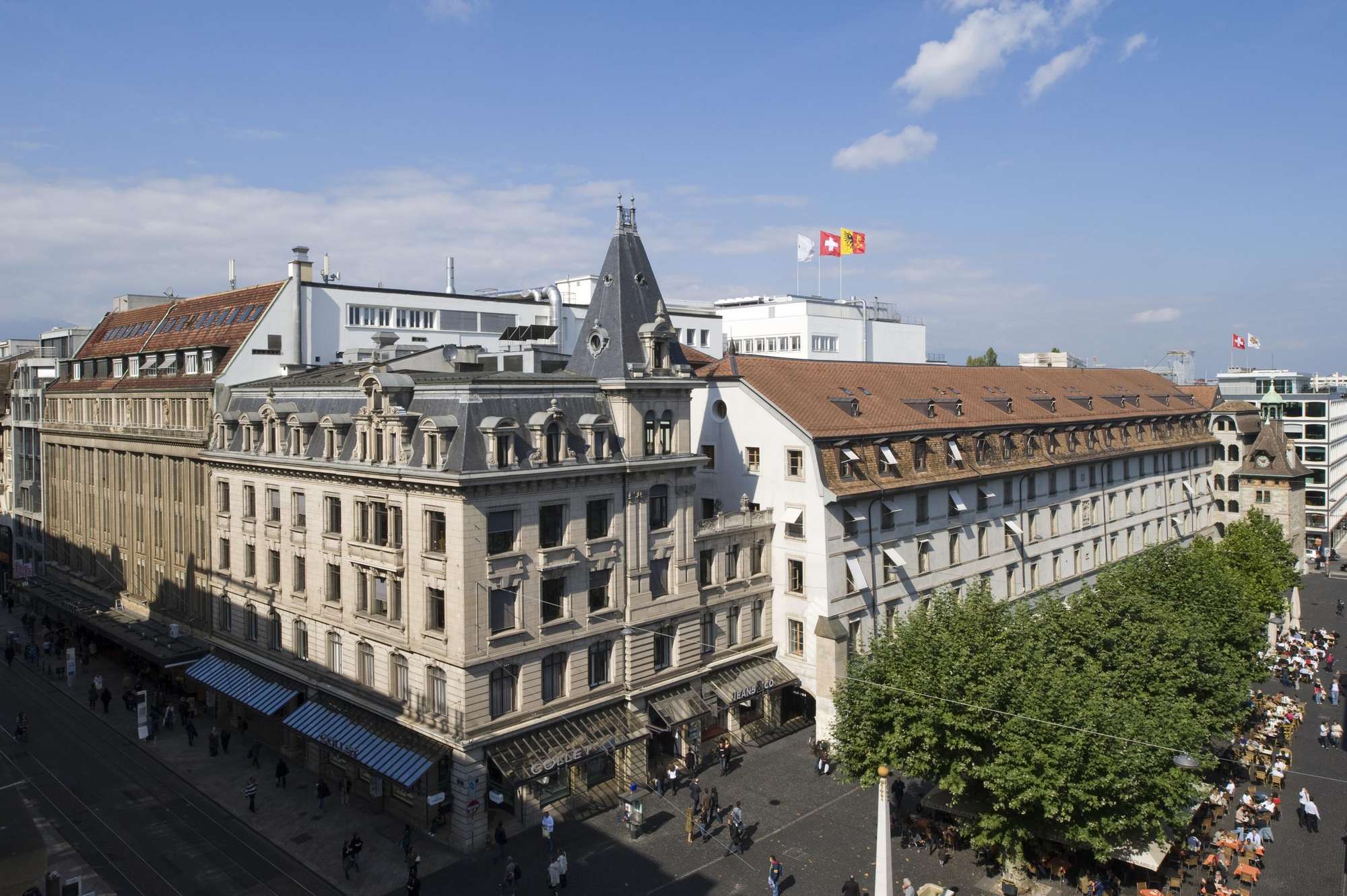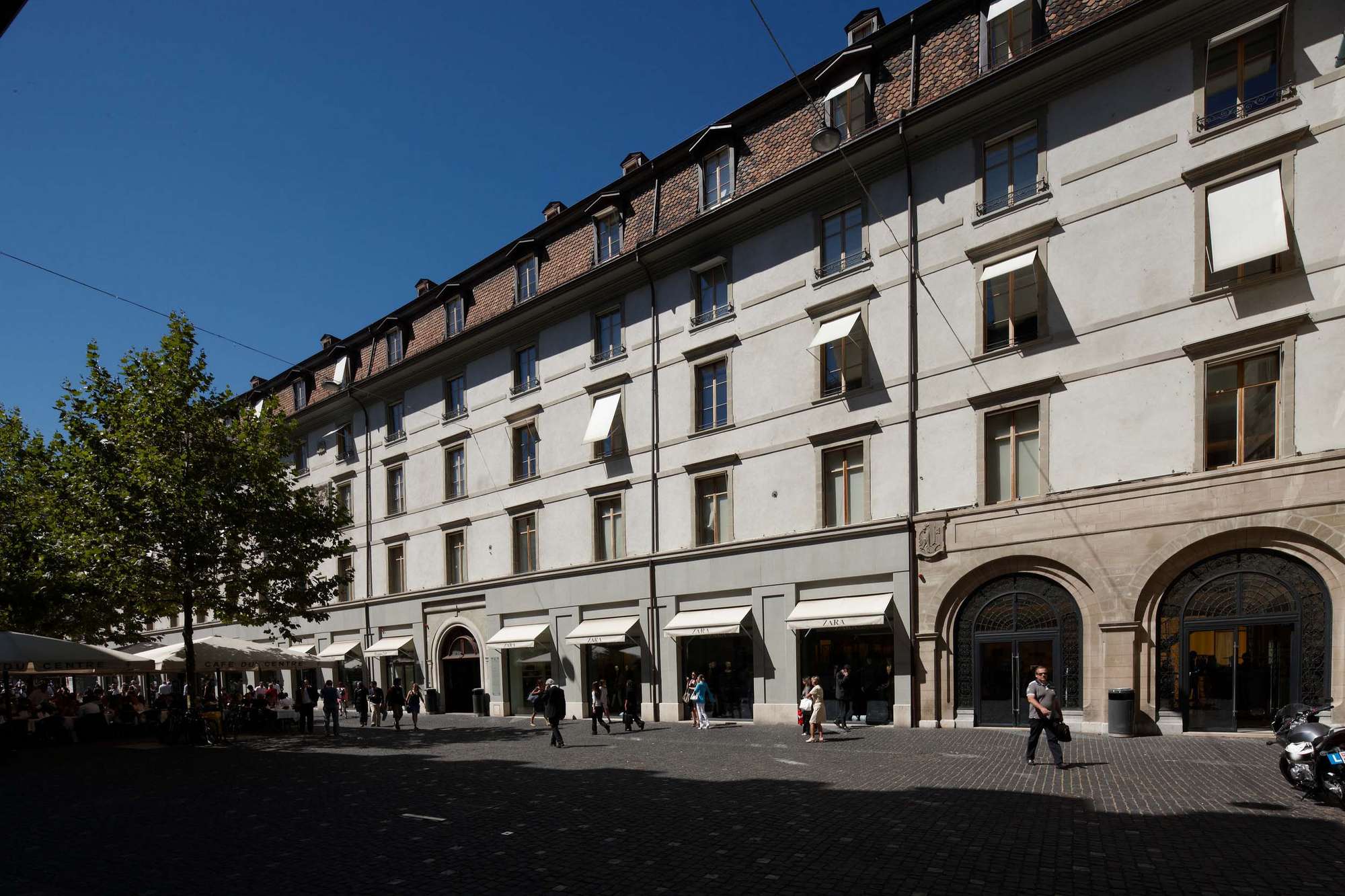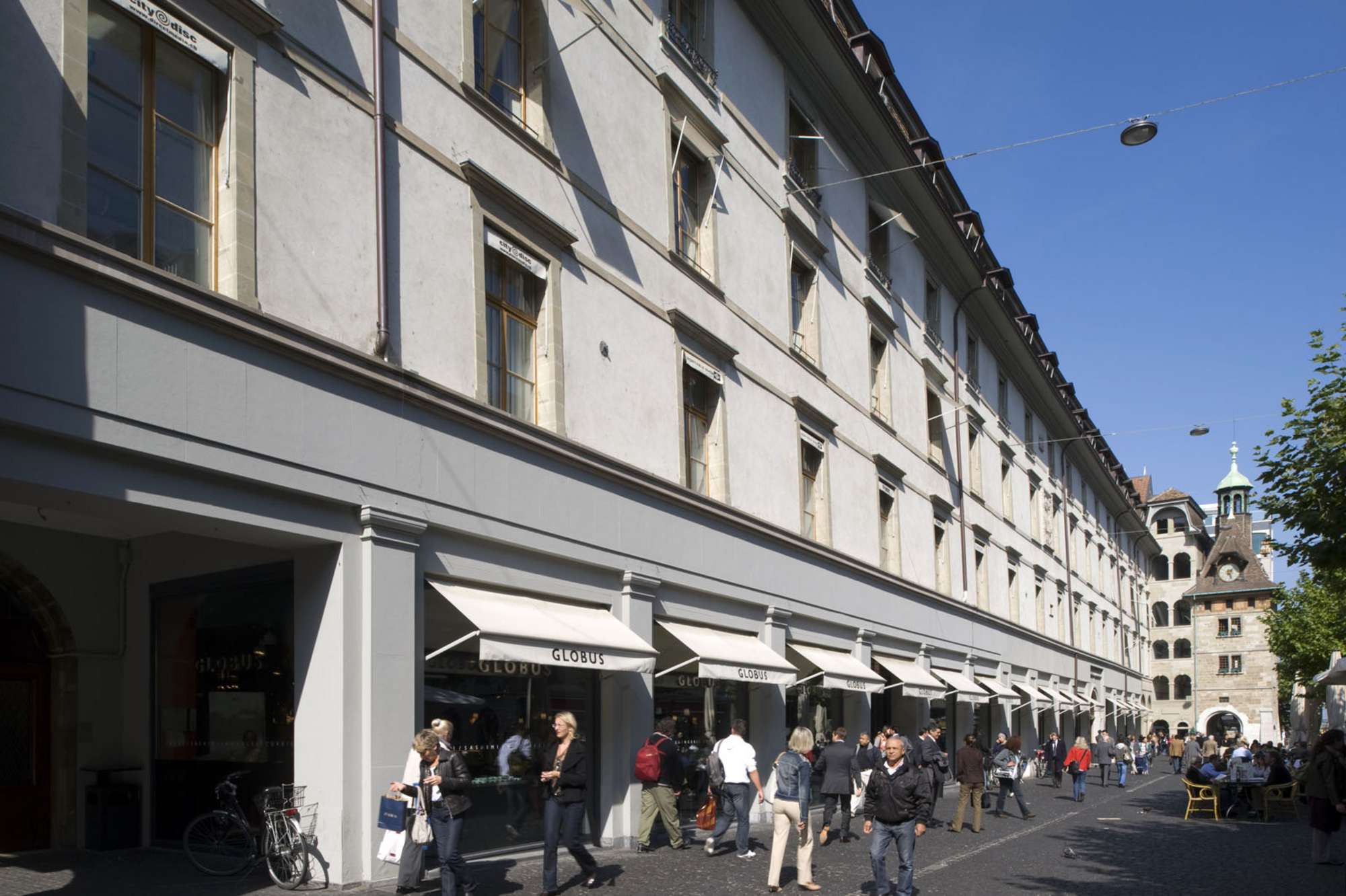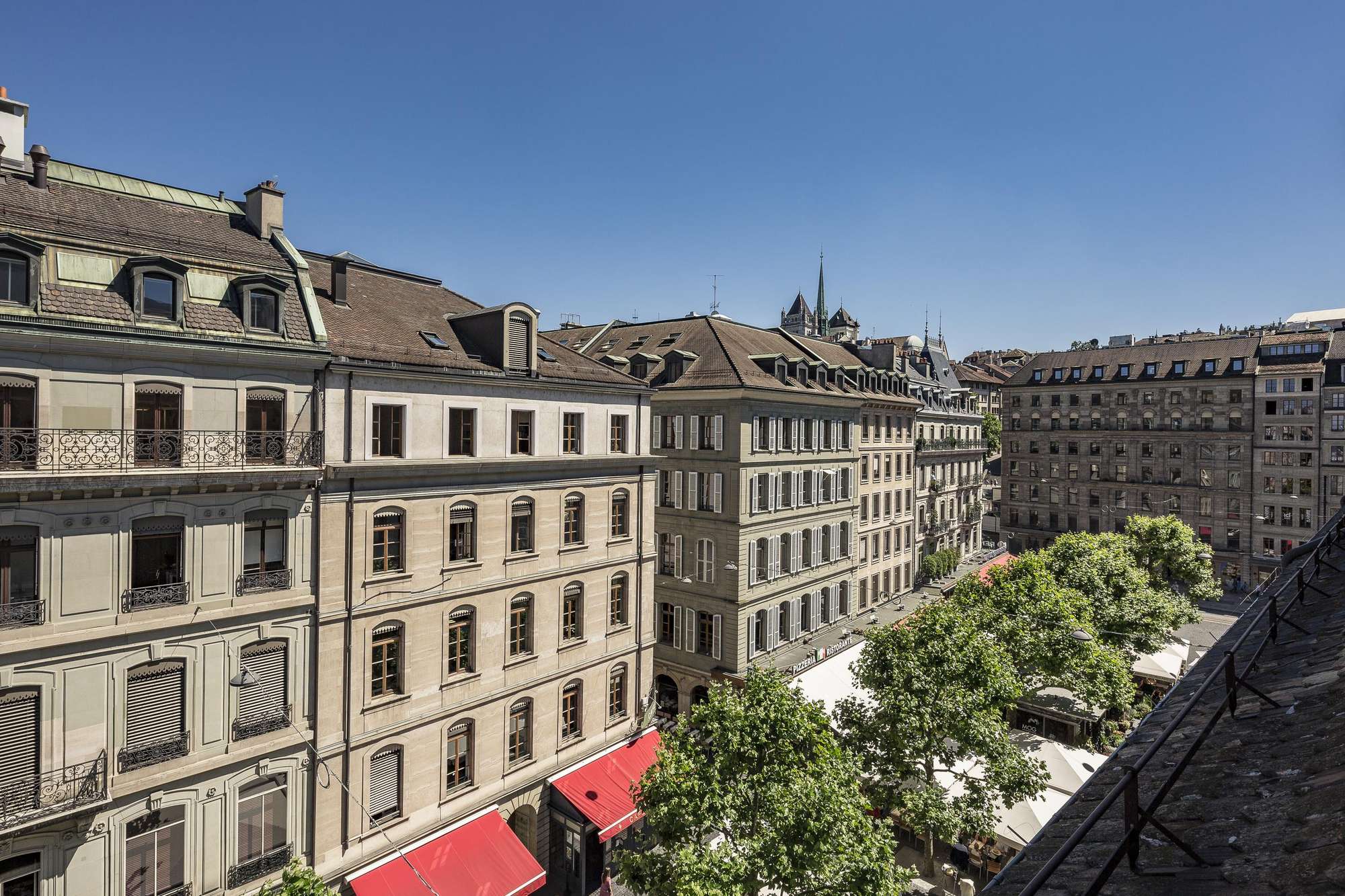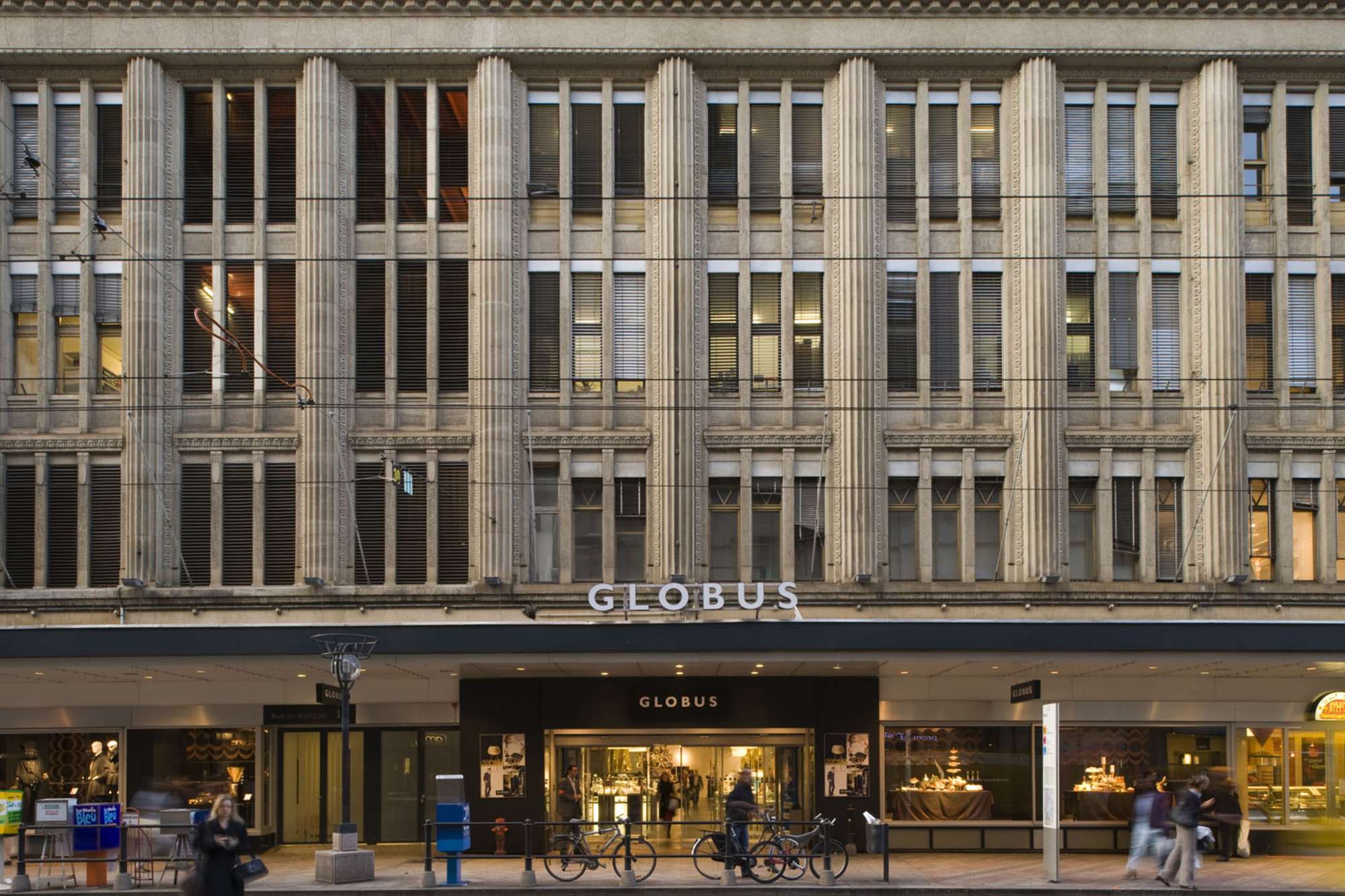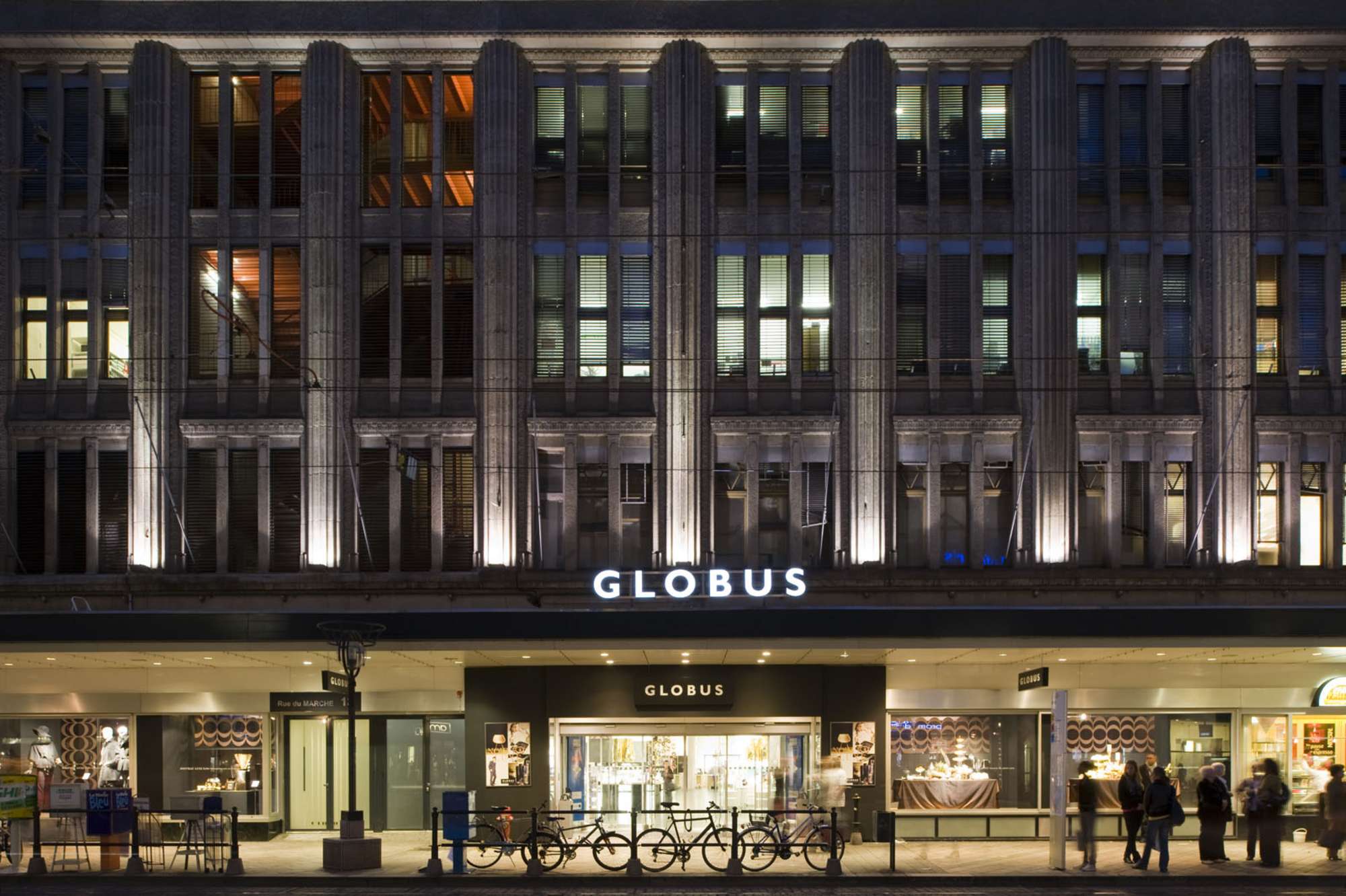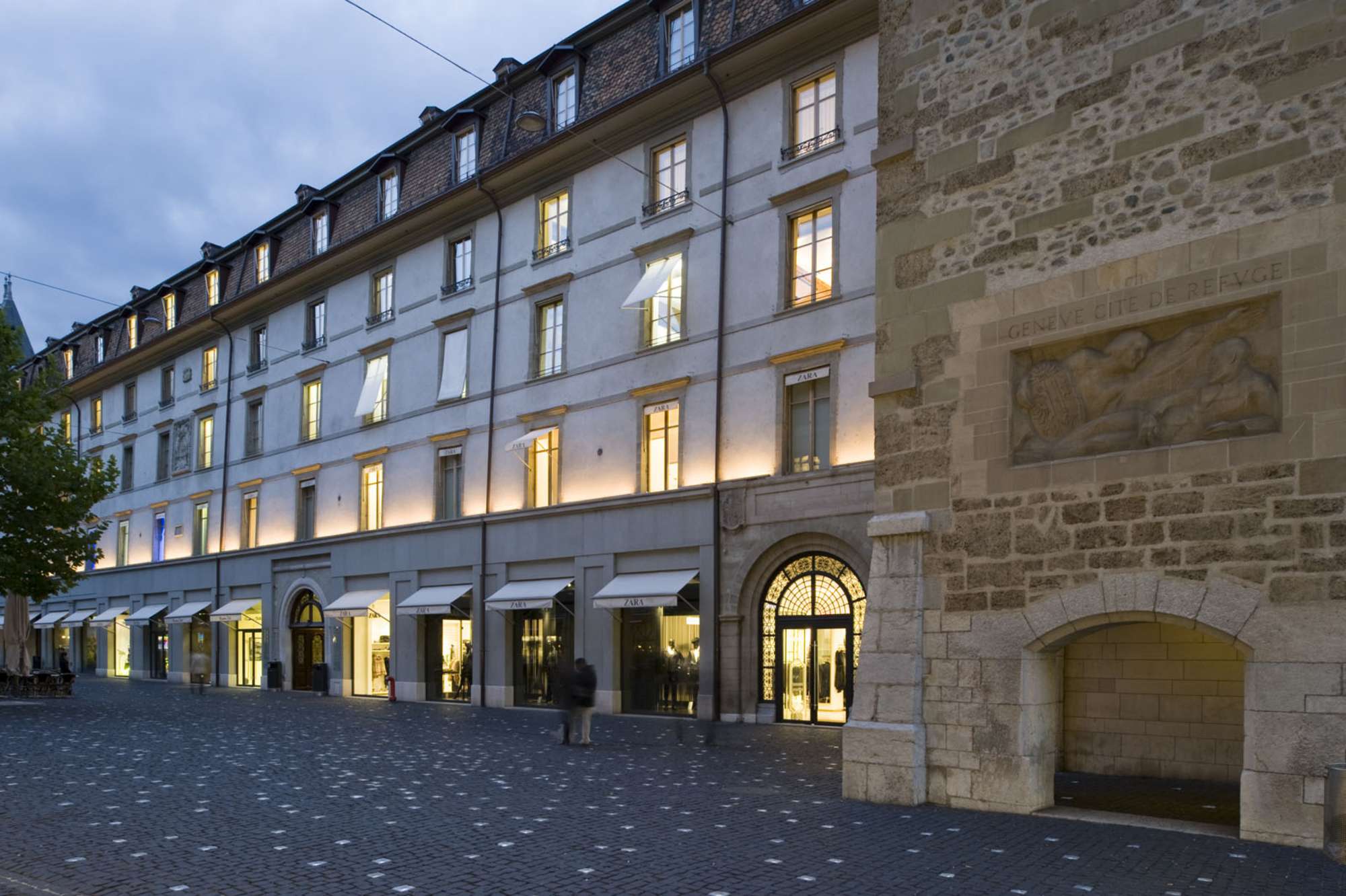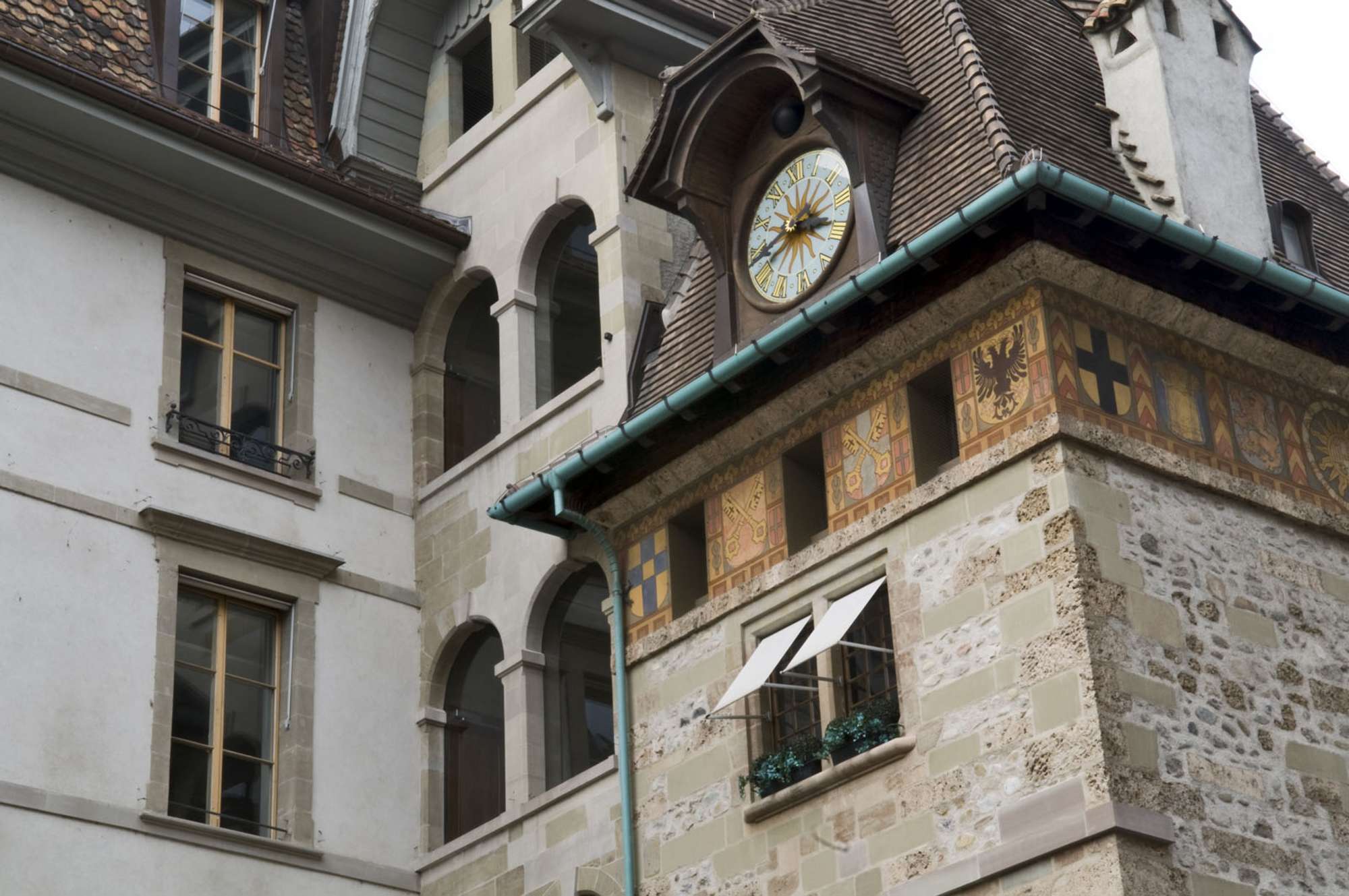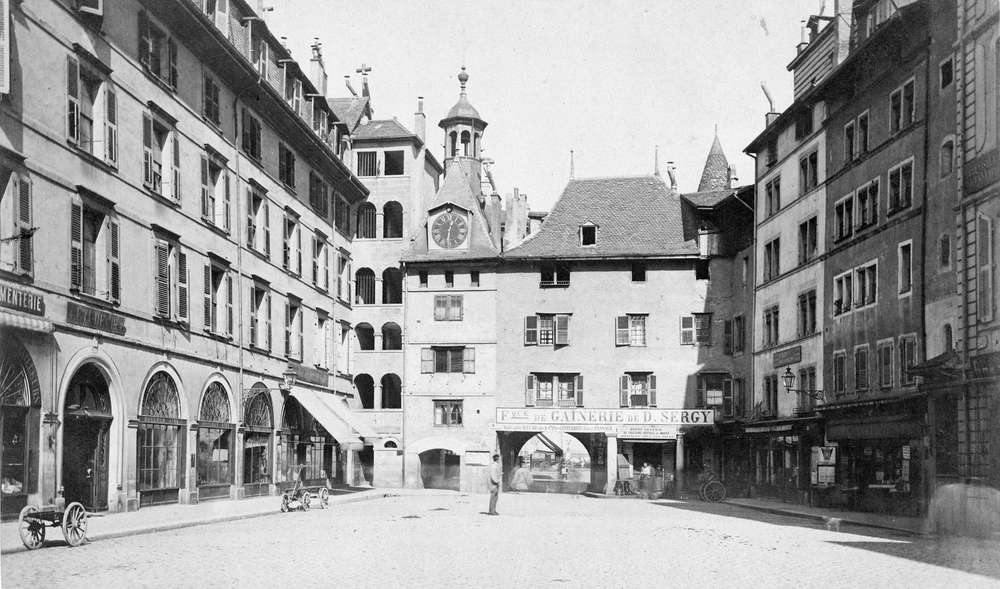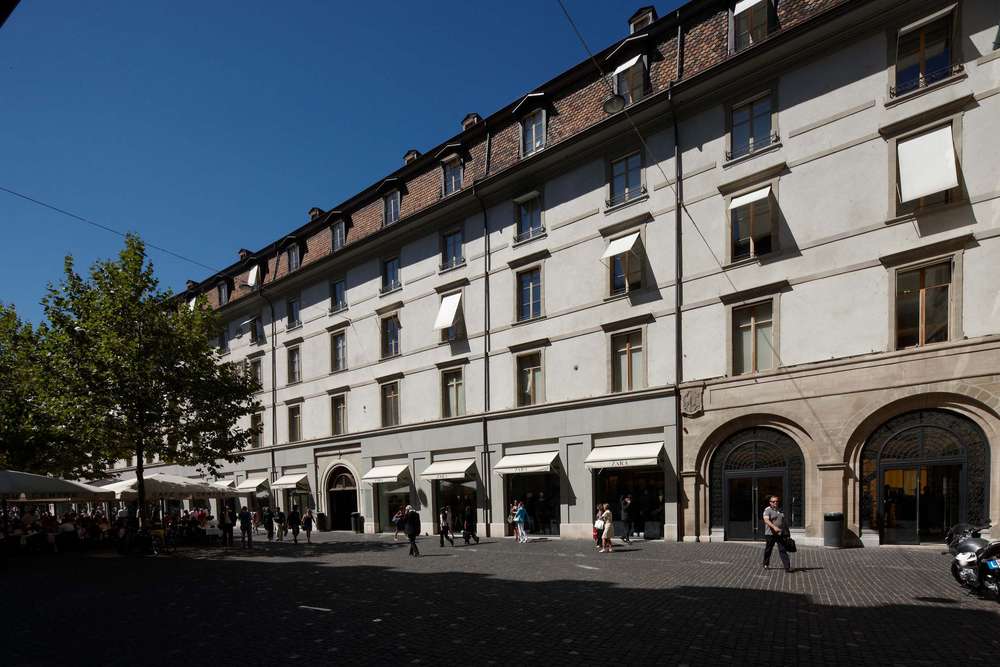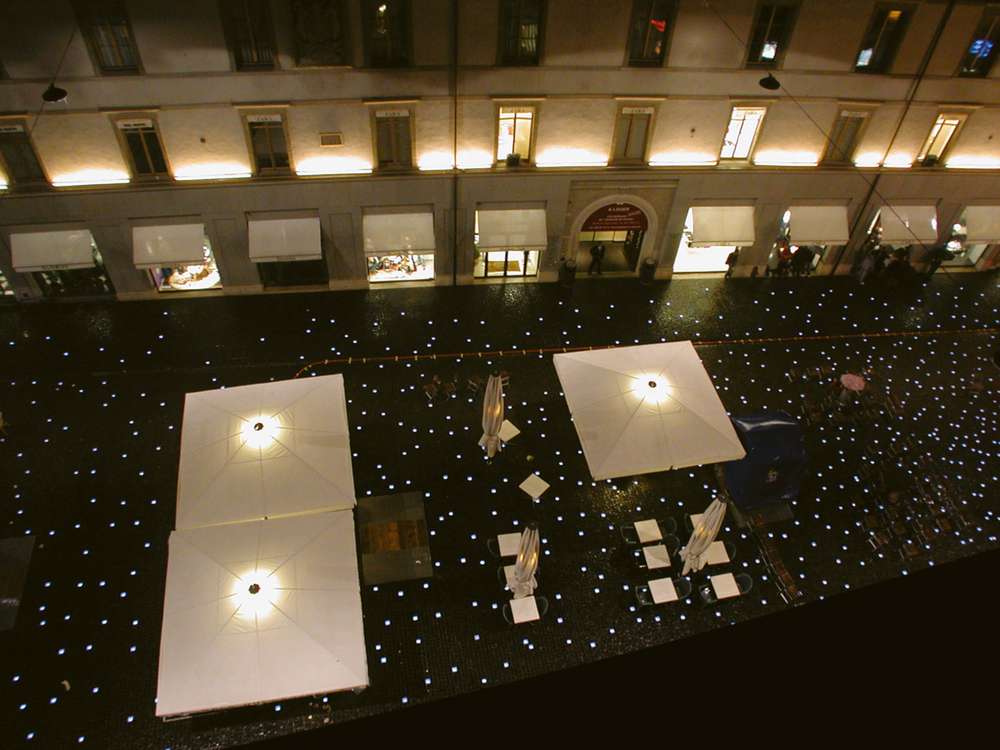Rhône - Molard
The location between Geneva's historic old town and the left bank of the Rhône is prime. Accessed from four sides, including the prestigious Rue du Rhône, this property offers pedestrians the opportunity to move around protected from the weather within the entire street block. The prestigious bijoux on the Place du Molard was built in various stages in the 16th and 17th centuries and has stood in its current form for around 300 years. The ensemble includes the time honored market halls and the Tour du Molard. The historic and prestigious property is a listed building and features unique architecture. Trade was conducted on the same site more than 2000 years ago. The property is connected to the property on Rue du Rhône on several floors. In addition to the anchor tenant Globus, the property on Rue du Rhône accommodates a diverse mix of tenants from the retail, office and fitness sectors. At the beginning of the 20th century, this property housed the first modern department stores Au Grand-Passage.
